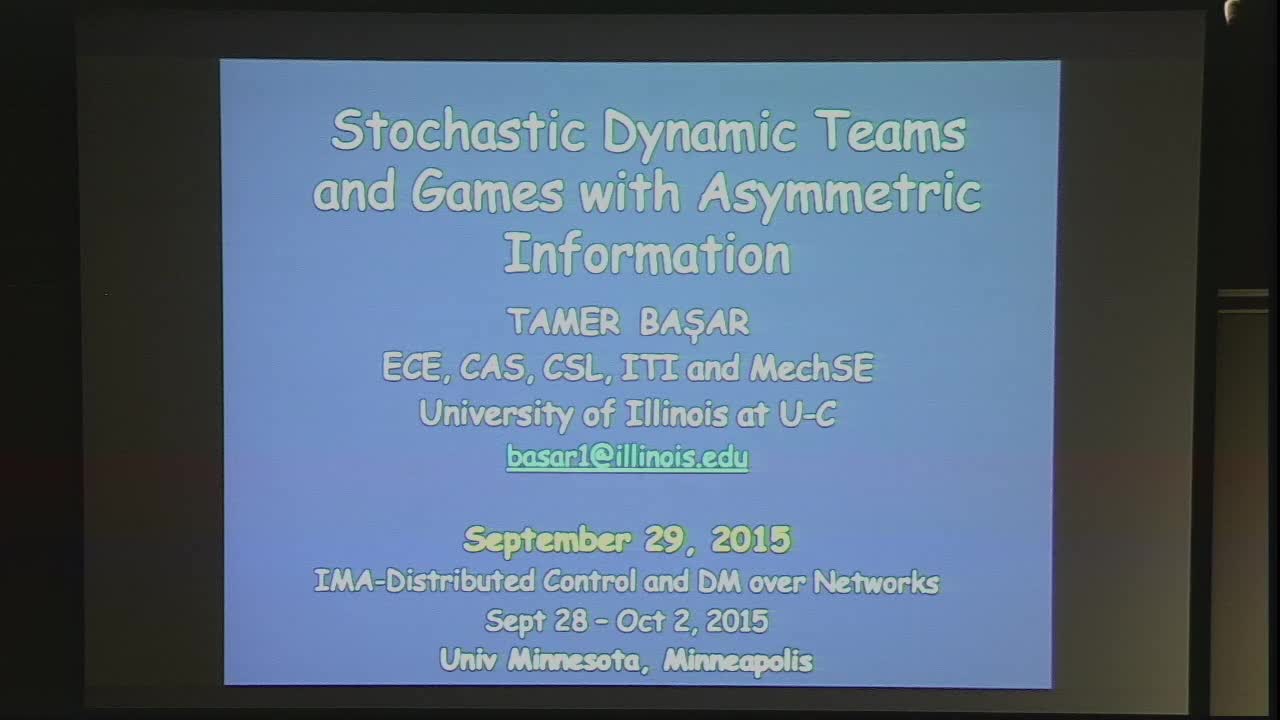Stochastic Dynamic Teams and Games with Asymmetric Information
Presenter
September 29, 2015
Keywords:
- Asymmetric thoery
MSC:
- 83D05
Abstract
In any real application of stochastic distributed decision making, be it in the cooperative team framework or the non-cooperative game setting, asymmetry in the information acquired by different decision makers (synonymously agents or players) naturally arises. Presence of asymmetric information, particularly in dynamic (multi-stage) decision problems, creates challenges in the establishment of existence of optimal solutions (in teams) and non-cooperative equilibria (in games) as well as in their characterization and computation. No unified theory exists (such as dynamic programming or maximum principle) that would be applicable to such problems. In this talk, I will discuss our efforts toward developing such a unified theory with regard to existence of solutions. For stochastic dynamic teams, the framework will encompass problems with non-classical information, such as Witsenhausen’s counterexample (and its multi-dimensional and multi-agent extensions) and the Gaussian test channel (and its multi-relay versions with real-time information processing and transmission), among others (including multi-agent systems with agent interactions and flow of information governed by two separate networks), for which the existence of team-optimal solutions will be obtained. Further, for stochastic dynamic games with asymmetric information, the existence of Nash equilibria will be established using the newly introduced refinement concept of “common information based Markov perfect equilibrium”. The approach for games entails establishment of equivalence between the original game and an appropriately constructed one in a higher dimensional space, with symmetric and perfect information, and with virtual players. For dynamic teams, the approach first lifts the analysis to the space of behavioral strategies, establishing existence in that richer space, and then brings the solution down to the original team problem while respecting the informational relationships. Several examples will be provided to illustrate the solution technique, the underlying caveats, and the conditions involved. Some open problems and future directions for research will be identified, particularly linked to underlying graph topologies.
